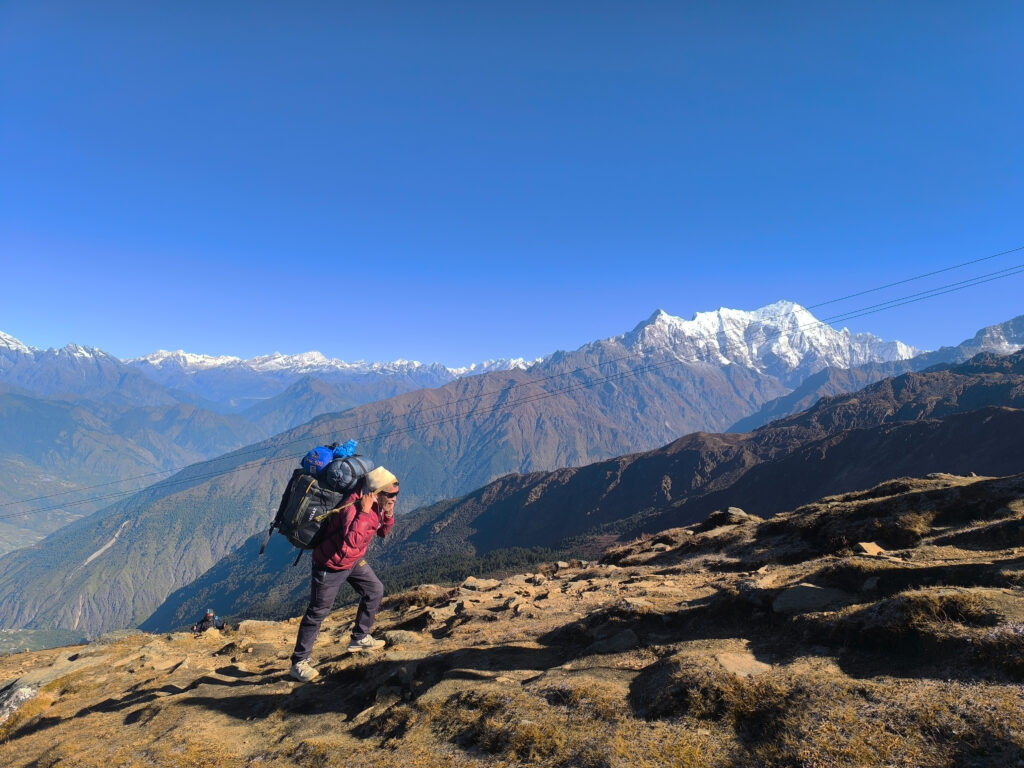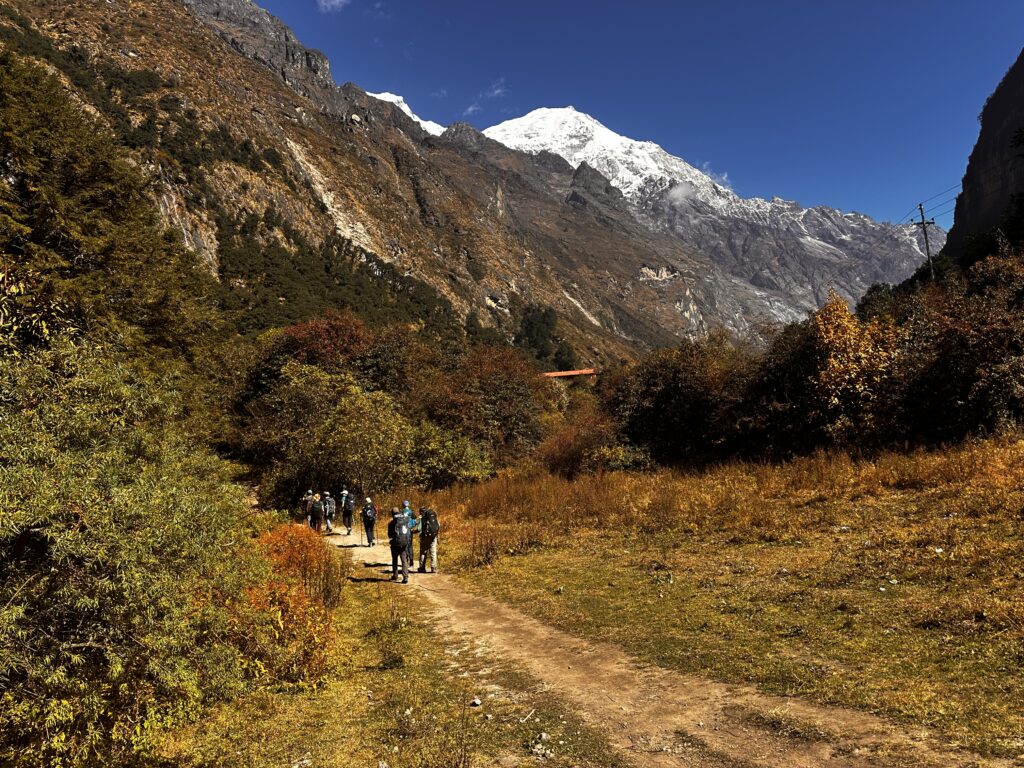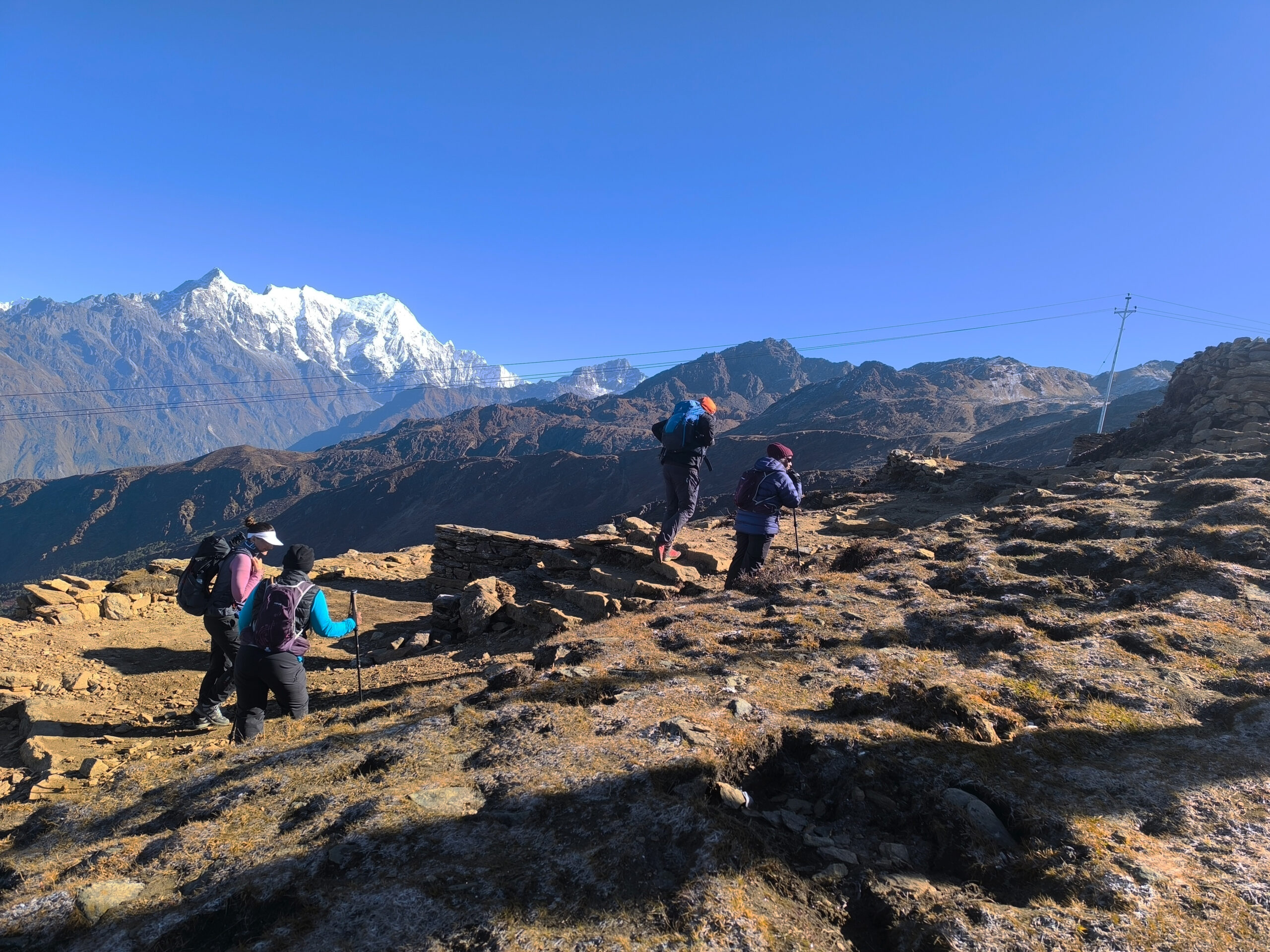Langtang Valley, nestled in the heart of the Himalayas, is one of Nepal’s most stunning trekking destinations. Located just 80 km north of Kathmandu, this enchanting region is part of Langtang National Park and spans diverse landscapes—from lush subtropical forests to high-altitude alpine meadows. It’s home to rare wildlife such as red pandas, snow leopards, and Himalayan tahr. If you’re planning a trek to this magical valley, let’s take a closer look at the Langtang Trek difficulty and what makes this adventure truly special.
Trekking the Langtang Valley: A Journey Through Nature and Culture
The Langtang Valley Trek begins at Syabrubesi, a quaint village that marks the start of a journey through dense forests and serene villages. As you make your way up to Kyanjin Gompa, the landscape transforms, offering incredible views of towering peaks. Along the way, you’ll stay in cozy tea houses run by local families, where you’ll experience Nepalese hospitality and enjoy simple yet delicious meals.
This trek is deeply influenced by Tibetan culture, with locals known as Langtangpa practicing Buddhist traditions. You’ll also have the opportunity to hike to nearby peaks like Kyanjin Ri and Tsergo Ri, where panoramic views of the Himalayas will leave you in awe.
Langtang Valley Trek Difficulty: What to Expect

The Langtang Valley Trek is classified as a moderately difficult trek, making it ideal for trekkers seeking adventure without the extreme challenges of higher-altitude climbs. The steep and narrow trails can be physically demanding, especially as you ascend towards the Langtang Village. The climb to Lama Hotel requires stamina, and continuous stair climbs add to the difficulty.
Altitude also plays a role in the challenge. Even reaching Tserko Ri, at 5,033 meters, can lead to altitude sickness if you haven’t acclimatized properly. The weather can also be unpredictable, with slippery trails during the monsoon or icy conditions in winter.
However, the rewards are worth the effort. The breathtaking mountain vistas and the serene beauty of Langtang Valley make every challenging step memorable.
The Impact of Weather and Seasons on Trek Difficulty
Weather plays a significant role in the Langtang Trek’s difficulty. Choosing the right season for your trek can make all the difference in the level of challenge you’ll face.
- Spring (March to May) and Autumn (September to November) are the best times to trek. Expect clear skies, mild temperatures, and dry trails. These seasons make for an enjoyable and safe trek.
- Monsoon (June to August) brings heavy rains, which can make the trails muddy and slippery. The risk of landslides is also higher, and rivers may swell, making crossings hazardous.
- Winter (December to February) brings snow and ice, making the paths slippery and the temperatures cold. The trails can become difficult to navigate, and you may need additional gear like crampons to maintain grip. Strong winds at high altitudes also increase the risk of hypothermia.
Langtang Trek: Trail Conditions and What to Expect

The Langtang Trek is known for its diverse terrain. The trail begins in the lush forests of Syabrubesi at 2,380 meters and gradually ascends to Kyanjin Gompa, which sits at 3,830 meters. Along the way, you’ll traverse rhododendron forests, cross suspension bridges over the Langtang River, and pass by waterfalls and villages. As you ascend, the scenery transforms from lush greenery to rugged, high-altitude landscapes.
Expect some steep ascents, rocky sections, and uneven paths. The terrain can be slippery, especially after rain or snow, so sturdy hiking boots are essential. The altitude gain is rapid, so acclimatization is important to avoid altitude sickness. Most trekkers cover 10 to 15 km per day, walking for about 6 to 7 hours.
The tea houses along the trail provide basic meals and lodging, but as you climb higher, the facilities become more rustic. Be prepared for changing weather conditions, and always pack warm clothes and rain gear.
Tips for Beginners: How to Prepare for the Langtang Trek
- Physical Preparation: Start preparing 2-3 months before your trek by doing cardio and strength training. Regular hikes on hilly terrain will help your body adjust to the demands of the trek.
- Acclimatization: Take rest days at higher altitudes to allow your body to adjust. Drink plenty of water to stay hydrated and prevent altitude sickness.
- Smart Packing: Pack light but include essentials like moisture-wicking clothes, sturdy boots, and a warm jacket. A local guide can help you choose the right gear for the conditions.
- Hire a Guide or Porter: A guide can enhance your experience, offering insights into local culture and helping you navigate the trail. A porter can carry heavy gear, allowing you to focus on enjoying the trek.
How High Does the Langtang Trek Take You?
The highest point on the Langtang Valley Trek is Tserko Ri, at 5,033 meters. As you ascend, the oxygen levels decrease, so it’s essential to take it slow and allow your body to acclimatize. Many trekkers spend time at Kyanjin Gompa to adjust before heading to higher altitudes. If you experience any symptoms of altitude sickness, like headaches or dizziness, it’s important to descend immediately.
Acclimatization and Preventing Altitude Sickness
Acclimatization is key to a safe and enjoyable Langtang Trek. Gradual ascents, rest days, and staying hydrated are essential for preventing altitude sickness. Pay attention to your body’s signals—if you feel unwell, take a break and descend if necessary.
Physical Fitness Requirements for the Langtang Trek
While you don’t need to be an expert trekker, a basic level of physical fitness is necessary. Regular cardio exercises like running, cycling, or brisk walking will help build endurance. Strength training exercises for your core and legs will help with balance and stamina on uneven trails. Practice hikes on hilly terrain will also prepare you for the challenges of the Langtang Trek.
Packing Essentials for Langtang Valley Trek
Pack only the essentials to make your journey more manageable. Here’s a packing checklist for the Langtang Trek:
- Clothing: Moisture-wicking base layers, a down jacket for warmth, a waterproof outer layer, lightweight trekking pants, and sturdy boots.
- Gear: A durable backpack, trekking poles, a hydration system, and a first-aid kit.
- Health & Safety: Sunscreen, insect repellent, and any necessary personal medications.
- Food & Cooking: Snacks like nuts, bars, and dried fruit. A portable stove if you plan to cook meals.
- Miscellaneous: A headlamp, camera, maps, and dry bags for electronics.
Stay Mentally Motivated During the Langtang Trek
Mental motivation is just as important as physical fitness. Break your trek into smaller milestones, focus on the journey, and embrace the stunning surroundings. A positive attitude, along with a flexible mindset, will help you overcome any challenges that arise.
How Long Does the Langtang Trek Take?
The Langtang Trek typically takes 6 to 8 days, depending on your pace and any side trips you take. The trek covers 65 to 77 kilometers, and the route offers a manageable difficulty level for most trekkers. Expect steady ascents, varied terrain, and awe-inspiring mountain views.
Guides and Porters: Enhancing Your Langtang Trek Experience
Hiring a local guide or porter can make your trek easier and more enjoyable. Guides help navigate the trail, offer valuable cultural insights, and motivate you during challenging sections. Porters carry heavy gear, allowing you to focus on the scenery and enjoy the trek at a comfortable pace.
Final Thoughts on the Langtang Trek
The Langtang Trek offers an unforgettable Himalayan adventure, combining stunning scenery, rich culture, and a moderate level of difficulty. With proper preparation, acclimatization, and a positive attitude, you’ll be ready to embark on this incredible journey. Whether you’re an experienced trekker or a beginner, Langtang promises a rewarding and memorable experience.
Have Questions or Need Help Planning Your Langtang Trek?
Feel free to reach out to us. We’re here to help you plan your trek and provide expert guidance for a safe and unforgettable adventure!







